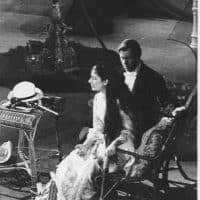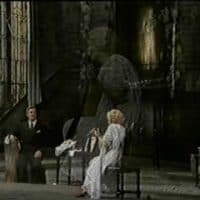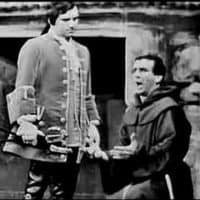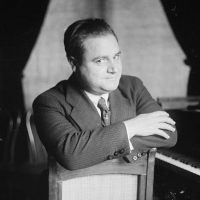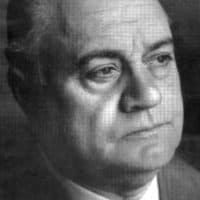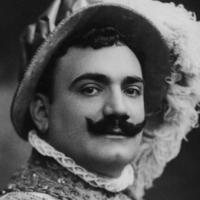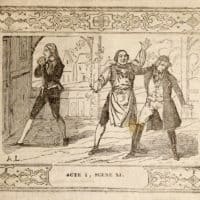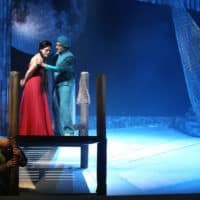Mirandolina was Czech composer Bohuslav Martinů’s sixth opera, written in 1953-4 and premiered in 1959. Based on Carlo Goldoni’s play La locandiera, it tells the story of the beautiful mistress of an inn, who is courted by three men: the rich Conte d’Albafloria, the aristocratic Marchese di Forlimpopoli, and the waiter Fabrizio. She leads them all on but is most intrigued by the challenge posed by the Cavaliere di Ripafratta, a new guest who loudly proclaims his hatred of women. What better conquest than to make him fall in love with her, too? Comedic hijinks ensue, with Mirandolina taking her provocation of the Cavaliere a bit too far and two actresses disguised as gentlewomen showing up to confuse everyone. The whole modern opera has something of a classic opera buffa feel.

The opera lasted in the Prague National Theater’s repertoire for four years after its premiere and was revived in 1980-2, but it has rarely been performed since. The Wexford Festival in Ireland programmed it in 2002; Teatro Rossini in Lugo gave it a short run in 2003; Garsington Opera offered the UK premiere in 2009; and Munich, Bratislava, Ostrava, and Prague all mounted productions in 2014 (perhaps a trend towards the opera’s revival?). I saw it for the first and only time on a trip to Prague in 2014, in the beautiful Theater of the Estates (unfortunately with the supertitles only in Czech, but fortunately sung in the original Italian with excellent diction).
What makes Mirandolina such a gem—and so ripe for more widespread revival—is its score. Martinů draws on Czech, Italian, and French classical musical traditions and folk music to create a rich, tuneful opera. It’s post-war modernity is evident, and it is inspired by great operatic tradition of the eighteenth and nineteenth centuries without imitating any particular composer or work. The score is varied and catchy, alternating speech-like vocal writing with flights of lyricism and upbeat dances (including waltzes and a saltarello). As the conducter Alexander Prior said in the preview video for the Munich production, “The music is there to make the story funny. That is what the music is for. And that is done really, really fantastically. You can understand the comedy without the staging, without the words, just with the music.”
Mirandolina’s first-act aria is a major musical highlight. It mixes conversational musings with rapid coloratura as Mirandolina considers the Marchese’s proposal, expresses frustration with the Cavaliere’s misogyny, and proclaims that her weakness (the admiration and service of men) is really the weakness of all womankind. The orchestration supports the voice well, always letting the singing remain the focus. It leaves the voice entirely exposed or rolls playfully beneath it, and Mirandolina’s statements are punctuated by finely textured bursts of brass and percussion. The embedded video below from Teatro La Fenice is set to play from just before Silvia Frigato (Mirandolina) launches into the aria, but start from the beginning for a fun staging of the opera’s entire first act.
If you like the sound of this opera, it is available in its entirety on YouTube as rendered by Riccardo Frizza and the National Philharmonic Orchestra of Belarus (though sadly without production video). Unfortunately, OperaBase lists no upcoming performances, so I can’t tell you to where and when to catch it live. Feel free to suggest it to your local opera company (large or small) or young artist program and change that!
